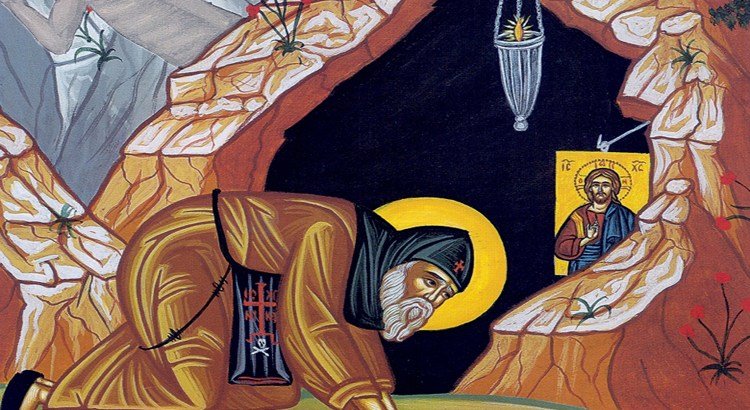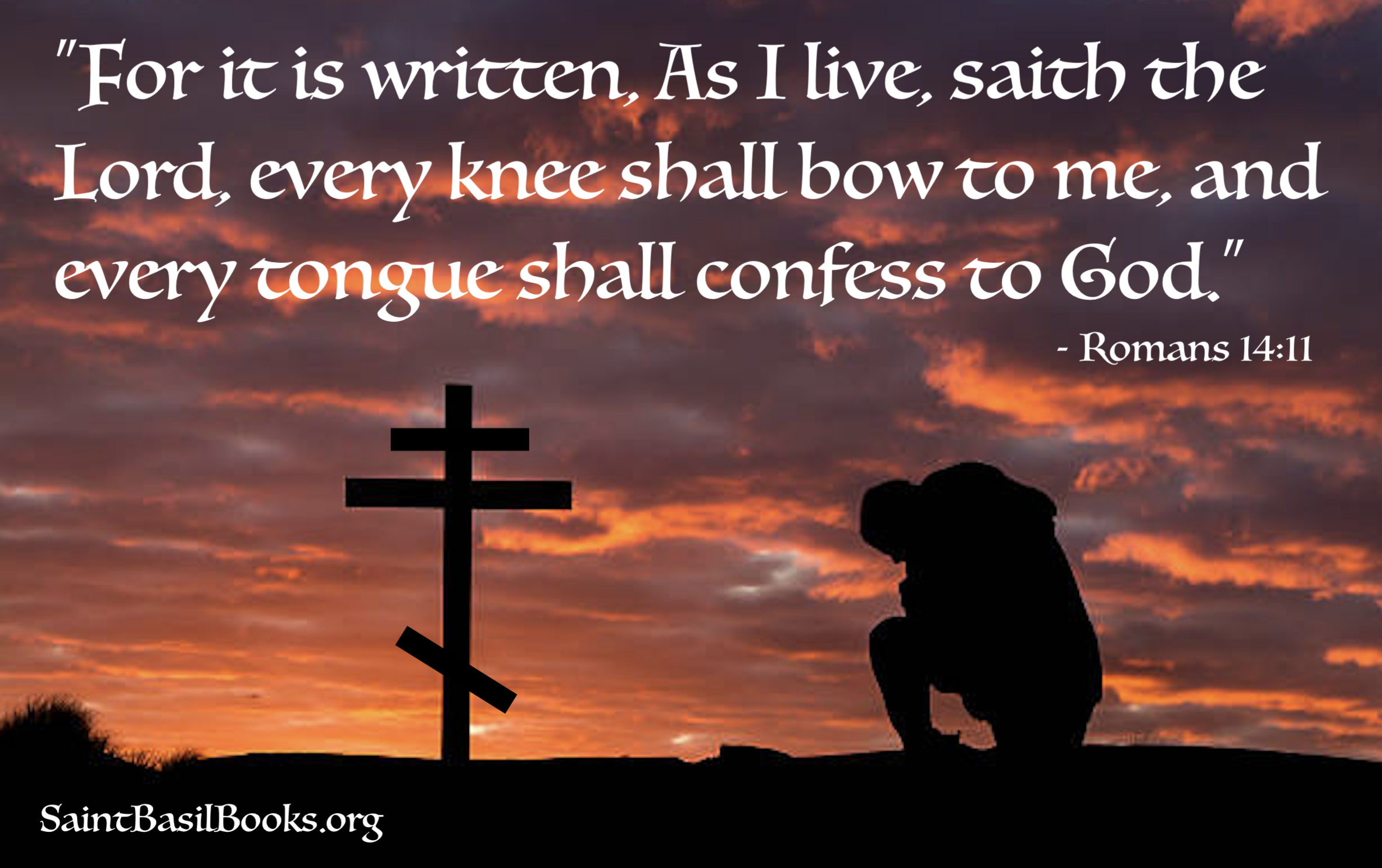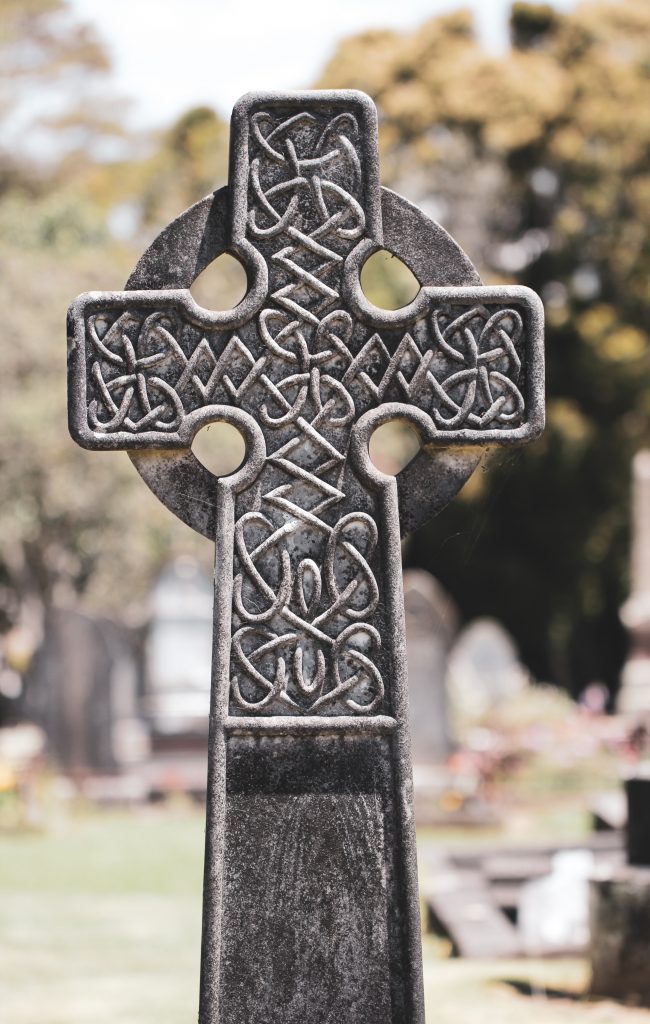
When Orthodox Christians bow and kiss icons this is called venerating the icon. It should go without saying that we’re not worshiping the icon itself, which is just wood and paint. We believe the honor we show to the depiction of Christ or Mary or John the Baptist is mystically transferred to Christ or Mary or whoever is depicted. Icons are windows into heaven.
A good way to understand this practice of veneration and what it means is to think about the practice of bowing itself as a custom. Why do people bow to another person? Or why did they historically?—because we don’t do this anymore in Western nations. Does bowing display weakness or strength?
Chivalrous knights bowed to their lords and ladies in order to show their respect and perhaps love. They would make an arch with their left arm ceremoniously while bowing the head and scraping their right foot back along their ground until their right knee touched the earth, something we’ve all seen in drama or in the movies. In the Bible, Abraham immediately bowed “low to the ground” when God appeared to him in the form of the three strangers. Assuming he didn’t know the identity of the strangers at first, he wasn’t worshipping them by this initial display of courtesy. David bowed and even prostrated himself when he revealed his presence to Saul after sparing his life in the cave. He definitely wasn’t worshiping Saul, he was fighting him with a guerrilla army! Thus, bowing to another person must have a broader meaning than idolatrous worship or even weakness or gullibility. Rather it displays a certain power of keenness, which far from acquiescing to abuse of power is the best way to carefully guard power.
In the east, in Japan and China, etc., people bow to this day. In Uganda, women kneel when an important man comes into the room. This doesn’t make them idolators or doormats. Rather, it displays their keen respect for and careful observation of people in authority.
Also today, Orthodox Christians will sometimes bow to one another, especially on Forgiveness Sunday, which falls just before Great Lent, sometimes lowering just the head with our hands crossed on our chests, sometimes bowing lower or even touching our hand to the floor as is the style of some. And we give this honor to one another as unto Christ because as Christians we are all icons of Christ.
On the other hand, explaining this does little to persuade American Protestants that venerating icons and crosses or bowing and kissing a priest’s hand is for them. They view it as obsequious, more likely to show trivial, external unity, and dead tradition, rather than true Christian devotion. Protestants strive for intellectual unity above all else. Understanding what, for example, communion means is more important than who is authorized to serve it or whether it is the real body and blood of Christ or what position your body is in when you receive it. And you can’t blame them for this skepticism of what are Orthodox teachings given the centuries long decline of the Roman Catholic Church. Their views are simply a reaction to the abuses of Rome. But the result is that Protestant culture is actually closer to Islamic culture in its rejection of bowing than to historic Christian culture. Muslims believe it is a sin to bow to anyone but Allah. Likewise Protestants only bow in church during an altar call and perhaps during communion. All power is seen as necessarily concentrated in God and thus any physical gestures of submission to one another are suspect.
Presidents of the United States, who have been mostly Trinitarian Protestants, have made it a point to not bow before kings and queens as I understand. There was a bit of an uproar when Barack Obama bowed to the the King of Saudi Arabia. Of course American Protestants do not bow to their pastor. They would not think of kissing their pastor’s hand. They emphasize the election of their clergy (preferring popular leaders with strong executive skills), not the appointment of their clergy, whereas we Orthodox emphasize their appointment. All of this shows a very deep visceral divide between Protestants and Orthodox that is extremely difficult to overcome and a detriment to our witness before the watching world.
One way of overcoming this divide, I believe, is to acknowledge the strengths inherent in both sides. It’s good to not bow to Kings just because they are kings. Are they righteous or wicked kings? And as for clergy, scripturally, both election and appointment (ordination) are important as the first deacons were elected by the brethren and then appointed by the Apostles. But if the disciples bowed to Christ as they did when he delivered the great commission, why wouldn’t we bow before Christ’s living successors? Christ didn’t come into the world in order to forever erase the practice of bowing to anyone except himself. That would be absurd. But certainly if men refuse to bow even to Christ and his cross (as does the growing population of secularists) then it’s not surprising that they would abandon as a general principle all bowing, which also explains why men are abandoning chivalry.
Some people emphasize that we kiss the priests hand because he touches the body and blood of Christ. Yes. But why not also because he is appointed to do the work of Christ with his right hand? It’s good to have bishops who have executive skills, not just those who are chosen for pious qualities. Priestmonk Kosmas of Sidney, Australia, tells of a bishop who avoided confrontational situations and some people excused him by saying that he was being a good monk and very spiritual, but in fact what they were saying is that he was not suited to being a bishop! The Orthodox must not fall into the trap of thinking that spirituality means a demure, acquiescence to anything and everything, by keeping one’s mouth shut, in fear of driving away supporters of the Church. Nor does spirituality mean avoiding ambitious projects such as setting up our own parochial schools to separate our children from the world. Orthodoxy spirituality is not about losing. And neither is bowing. It’s an important part of running the race of the Christian life and winning.
Truly, bowing is custom fitted for bold people who live with honor, requiring as much honor and integrity in their clergy and other leaders as they personally show. Far from being a display of mental or spiritual weakness, it heightens one’s observation and awareness of one’s superiors and likewise their attention to us. And this reveals a lot about the meaning of venerating icons and to the cross in Orthodox Christian worship. By venerating these icons we are uniting ourselves with the saints in heave who have run the race victoriously.


